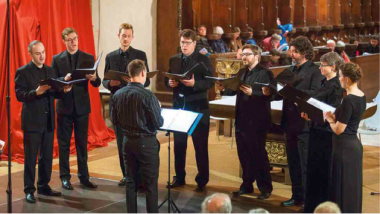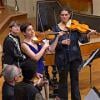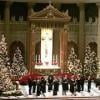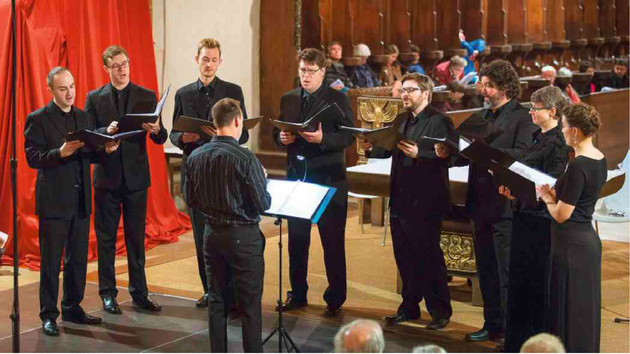
Cut Circle is the name of an eight-voice vocal ensemble, led by Jesse Rodin, that specializes in the music of the 15th-century master composers of the Franco-Flemish School: Guillaume Du Fay, Johannes Ockeghem, Josquin des Prez, and their contemporaries. Their mission is to bring late-medieval and Renaissance music to life. And it works amazingly well.
The review could end right here, because this is basically all you need to know. Go attend one of their concerts as soon as you can.
I did, last Saturday afternoon, at St. Mark’s Lutheran church in San Francisco, when Cut Circle performed under the auspices of the San Francisco Early Music Society with To Love Another, a concert program that over the weekend also took them to Berkeley and Palo Alto.
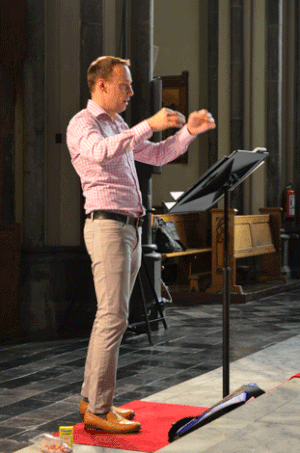
The program contained music from, of course, the ensemble’s musical heroes, Du Fay, Ockeghem, and Josquin, around the theme of “love in its many guises.” The central premise behind To Love Another is that, when it comes to love, to a 15th-century listener, there was no distinction between the secular and the sacred. Or there was at least a sliding scale.
“Vernacular love poetry could take on religious meanings if interpreted in a certain way,” explains Jesse Rodin, not only Cut Circle director, but also a distinguished, Stanford-based Josquin scholar, in his program notes. “Love can be earthly and sensual; it can also be spiritual and divine.”
That’s why the concert program juxtaposes works that celebrate Jesus Christ or the Virgin Mary with more worldly treatments of the subject of love and all of its intricacies, like in Josquin’s Une musque de Biscaye (A maid of the Basque country). In this comedic canonic chanson, a male protagonist unsuccessfully tries to court a Basque girl, only to be told, repeatedly, to “get lost.” All this with beautiful solo work by sopranos Clare McNamara and Kathryn Radakovich.
In their presentation, the members of Cut Circle display a certain brashness and a loose, folksy style that is quite appealing and engaging, and is applied equally to music with religious context and without.
The opening motet, Josquin’s Virgo prudentissima, immediately revealed the great intensity of music making that Cut Circle is capable of, with the entire ensemble performing (Clare McNamara, Kathryn Radakovich, Jonas Budris, Bradford Gleim, Lawrence Jones, Steven Soph, Sumner Thompson and Paul Max Tipton).
This intensity did not let up when the members of Cut Circle presented themselves in smaller combinations, such as in Ockeghem’s exciting rondeau (and title piece of the concert program) D’ung aultre amer (By loving another).
All this led up to, after intermission, the intriguing Missa Se la face ay pale by Guillaume Du Fay, preceded by the strophic, secular ballade (“Se la face ay pale, la cause est amer” — “If my face is pale, the cause is love”) on which the mass is based.
Rodin’s elaborate program notes, text and style annotations and other pointers, are a thing to be grateful for. They provide plenty of hooks and markers to enhance the listening experience (mine, at least). But the concert experience that Cut Circle provides did very well on its own.
“Jesse Rodin strives to make contact with lived musical experiences of the distant past”, is the opening statement of the “Meet Jesse” section of Cut Circle’s website. How wonderful that he and his ensemble create such an amazing lived musical experience now, in the present.

